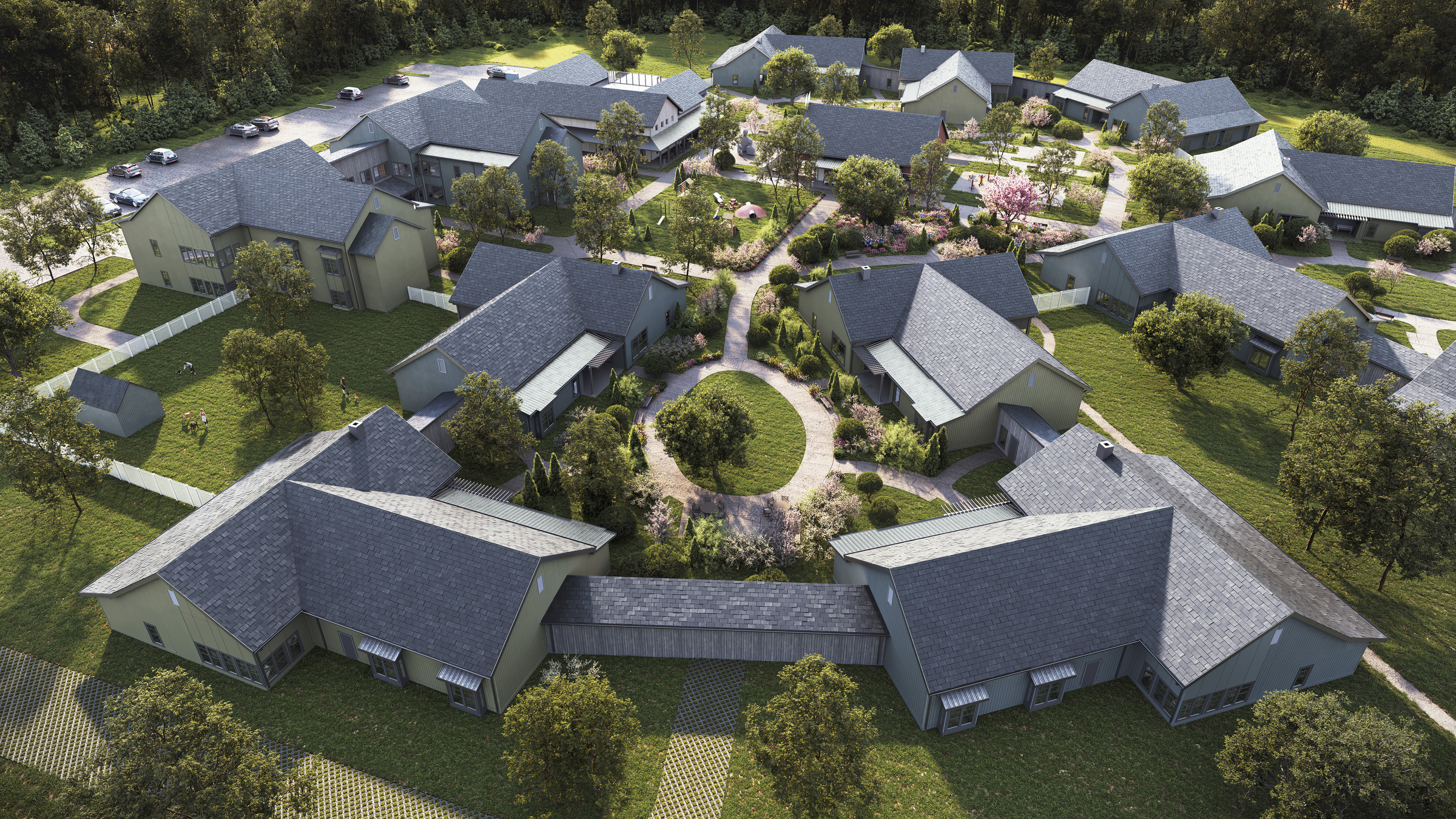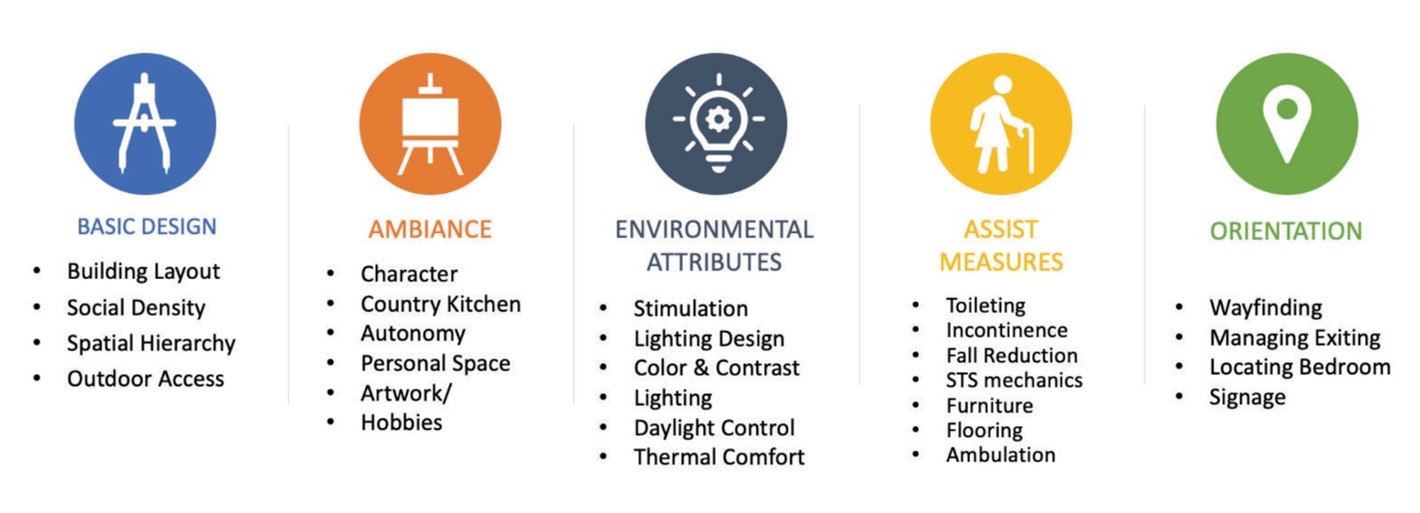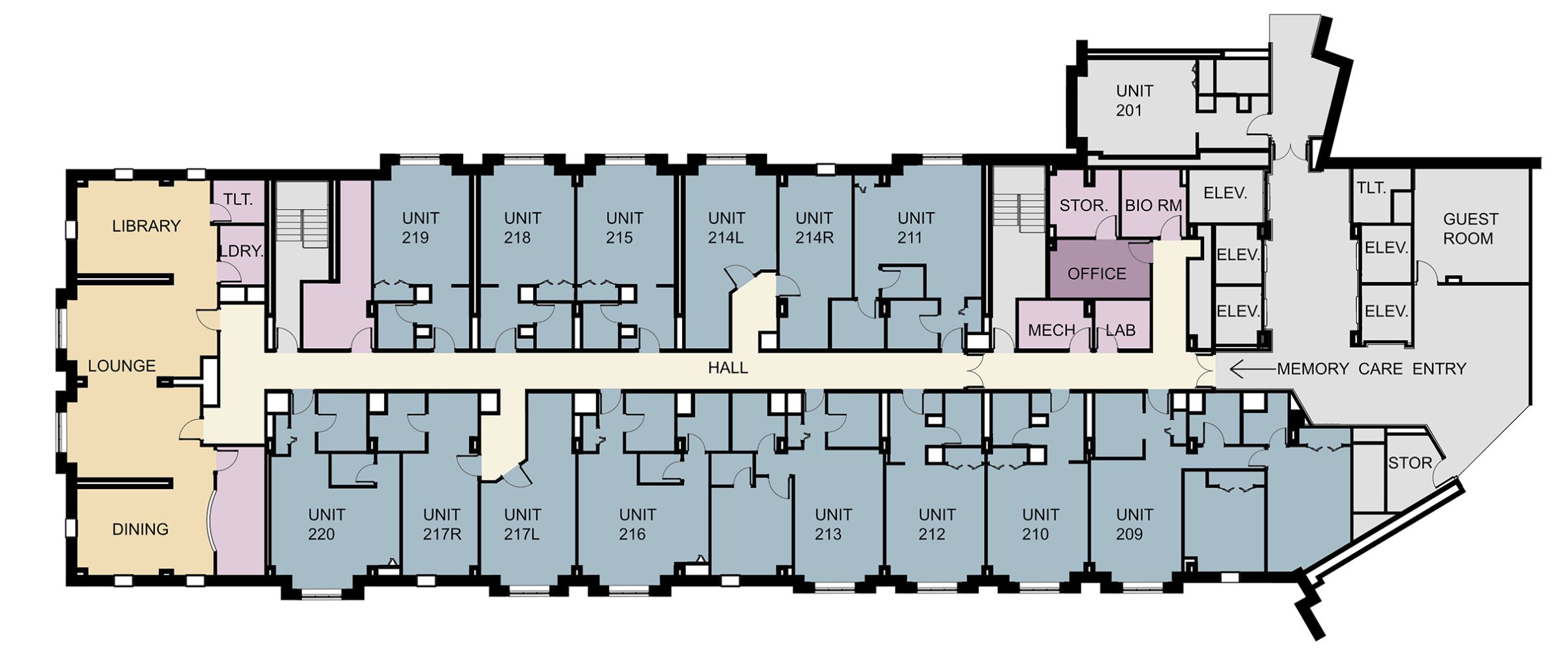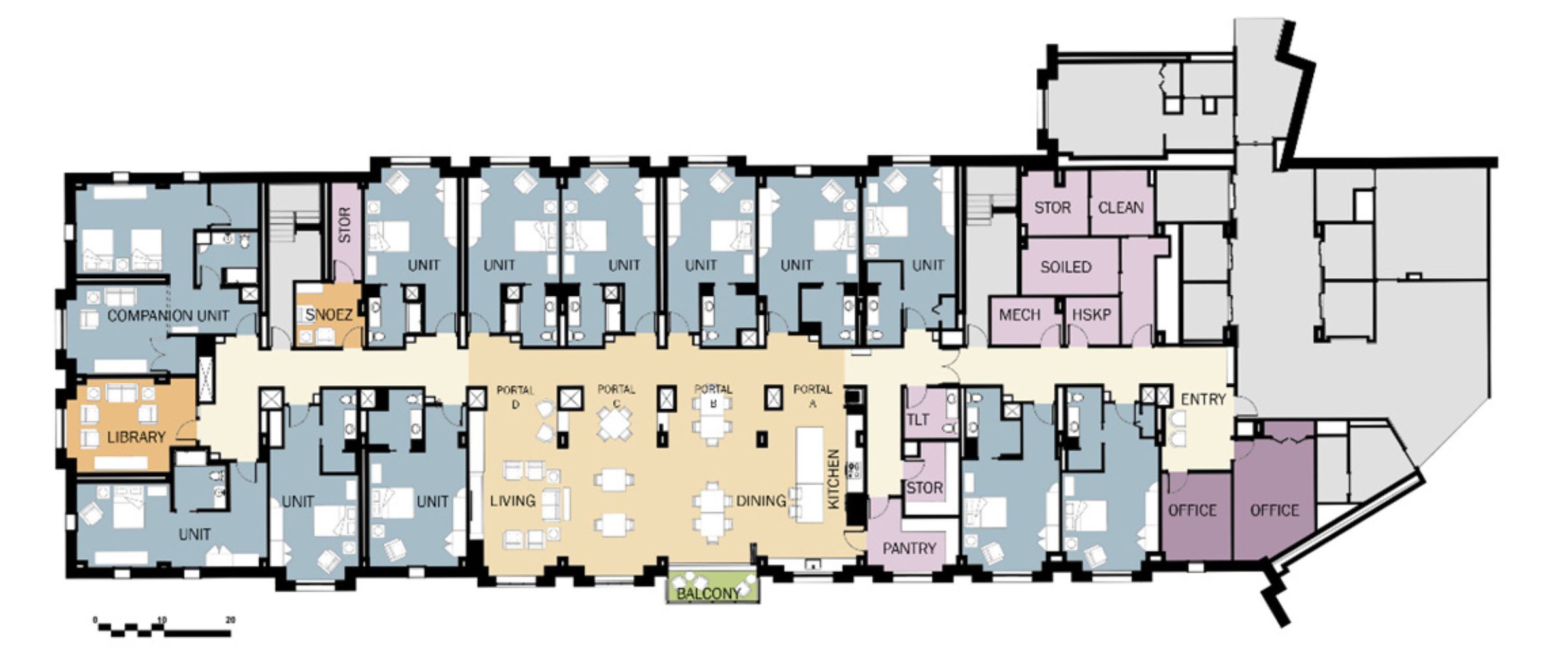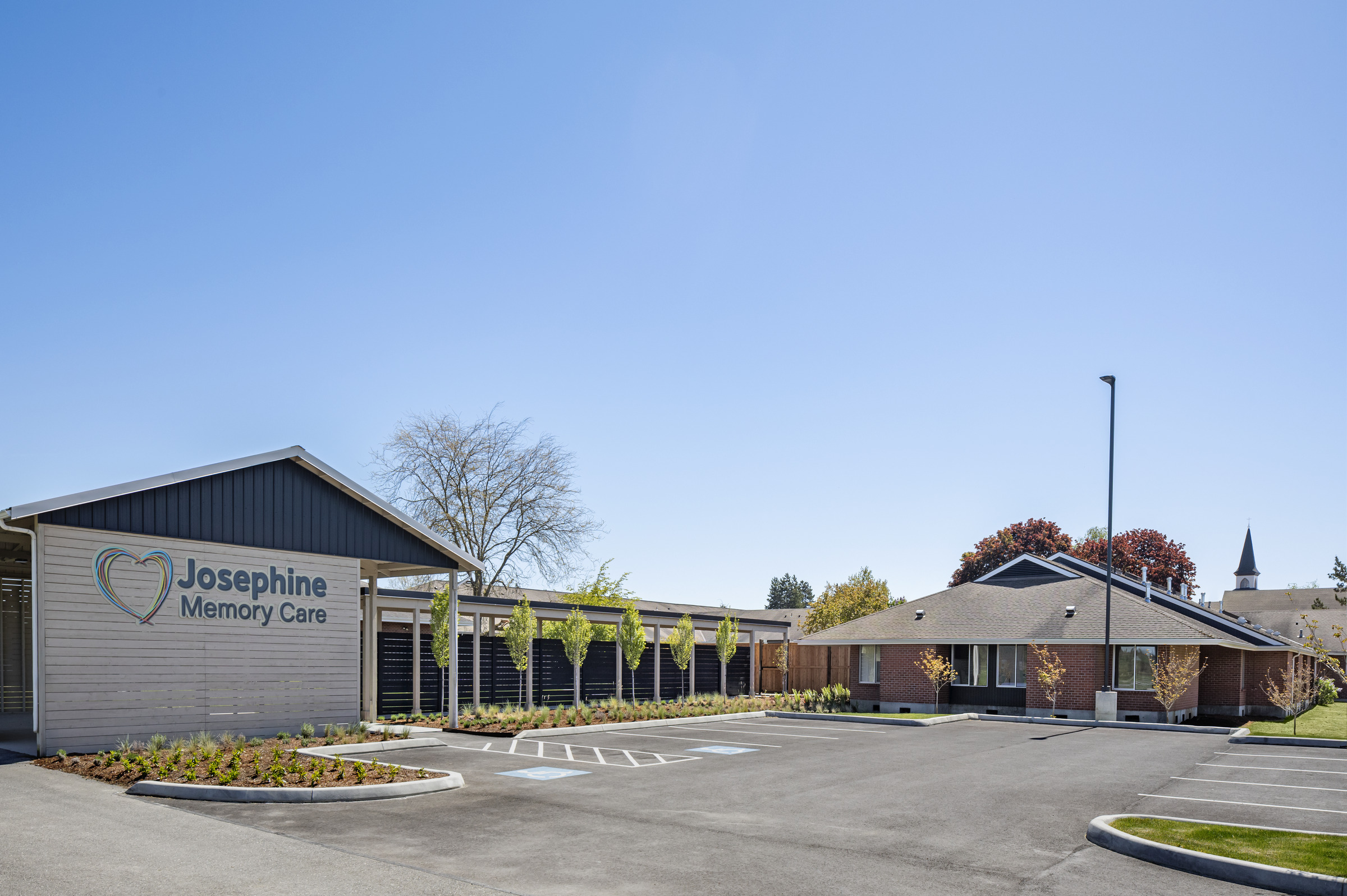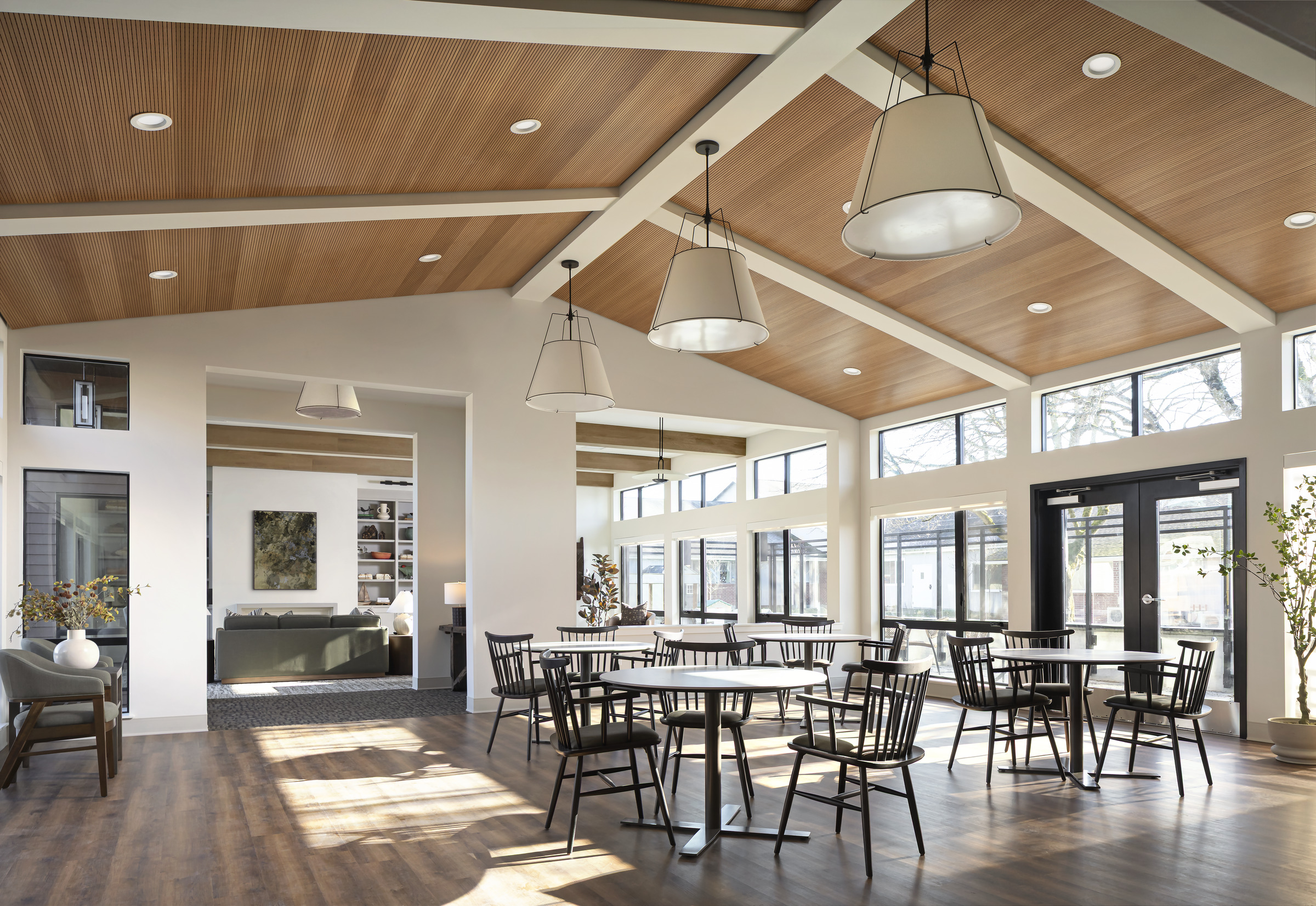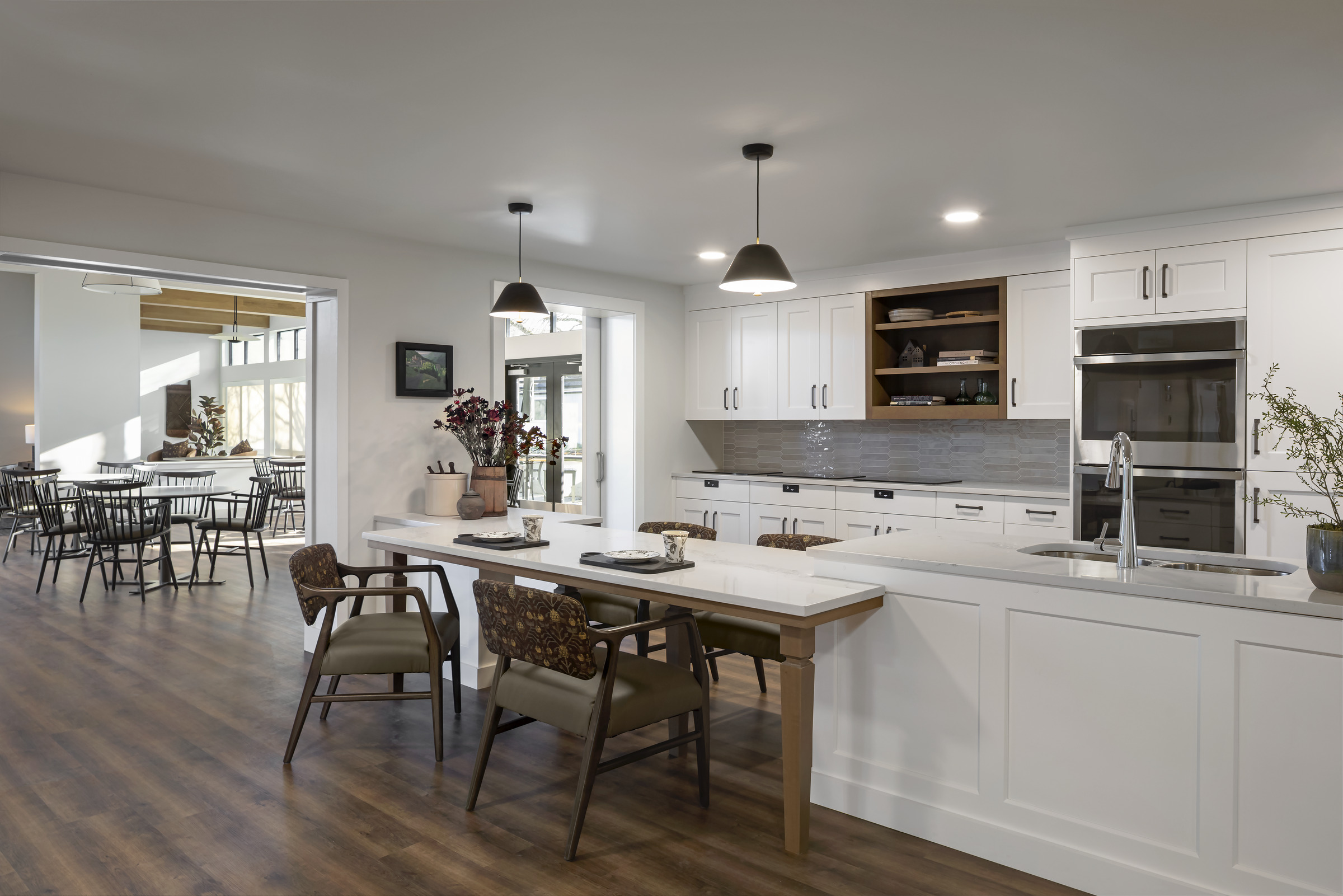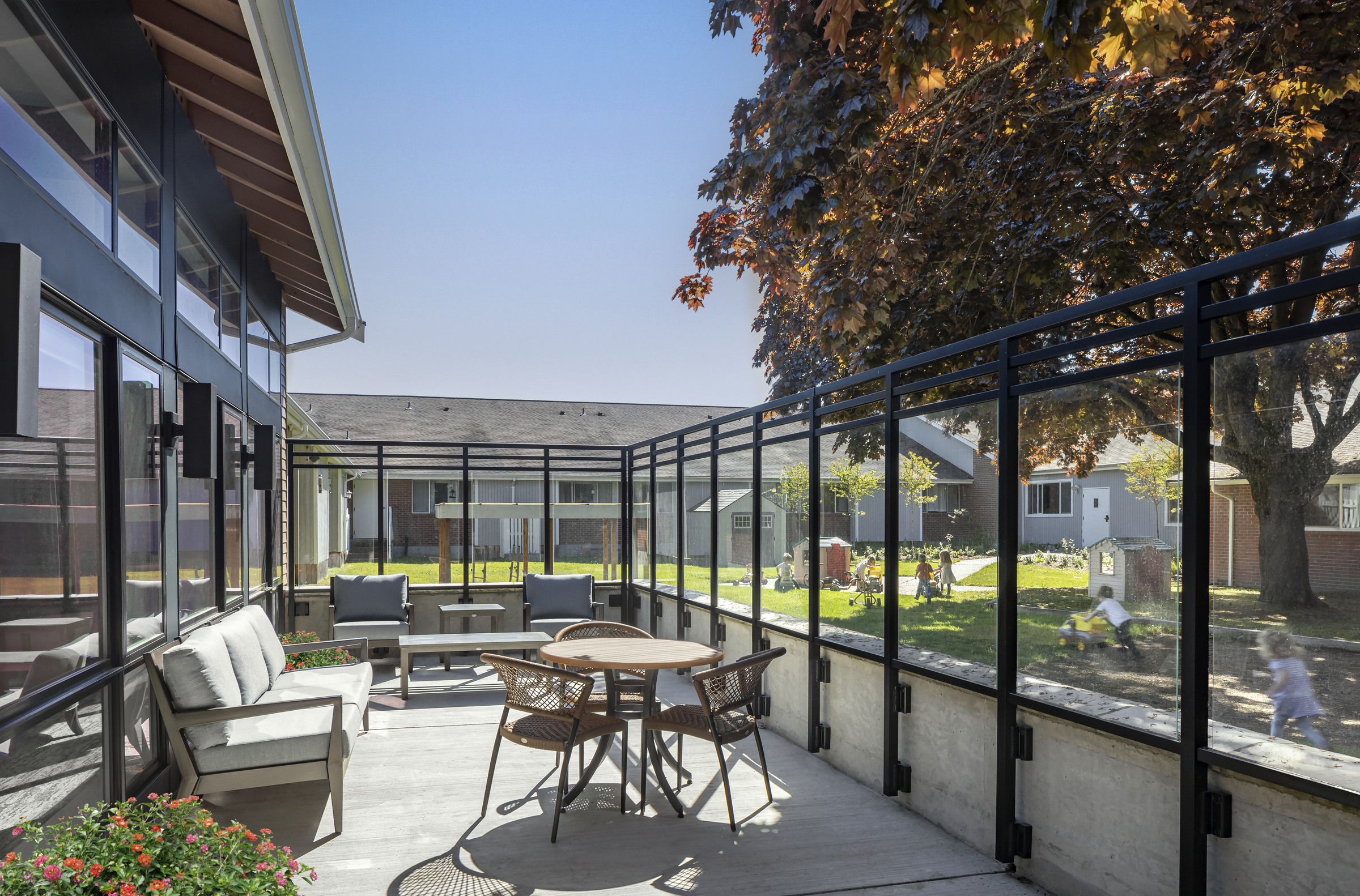Our practice has taken several approaches toward guiding that change, based on the unique mission and population of each community. We do this by finding inspiration outside the United States to create guiding principles for new development, pioneering the use of new evidence-based design tools, and partnering with clients to propose strategic solutions for continued viability.
International Inspiration
The Hogeweyk in Weesp, Netherlands, has been heralded internationally for creating a non-institutional, person-centered dementia community. As US providers have looked to imitate this model, some have mistakenly latched onto its nostalgic aspects while ignoring the philosophical foundation that makes it successful: Hogeweyk’s holistic vision of normalcy for people with dementia.
Perkins Eastman’s Missing Main Street identifies 11 patterns that make Hogeweyk successful and replicable:
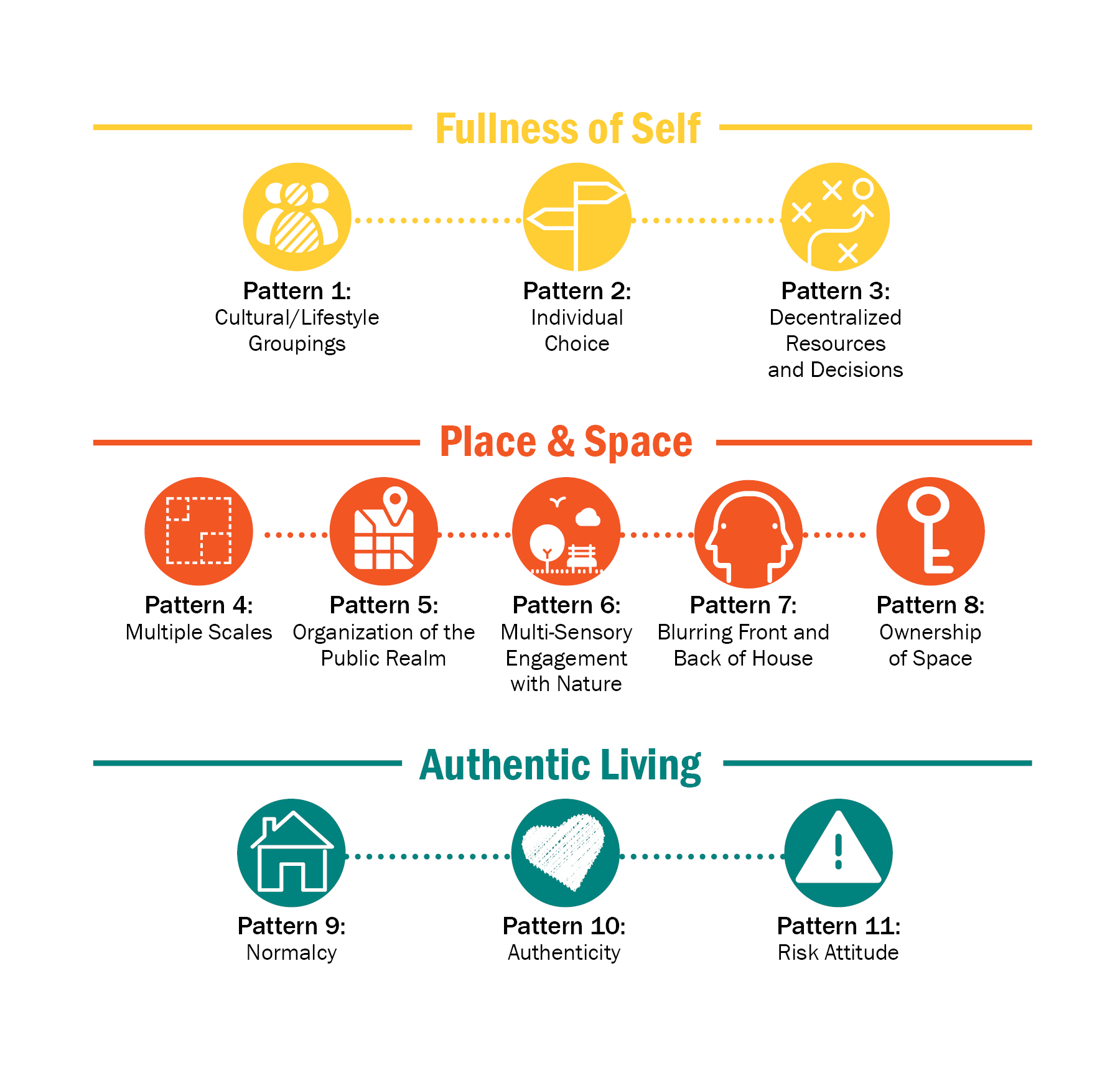
These patterns can be combined, altered, and reimagined depending on a provider’s vision for its community.
